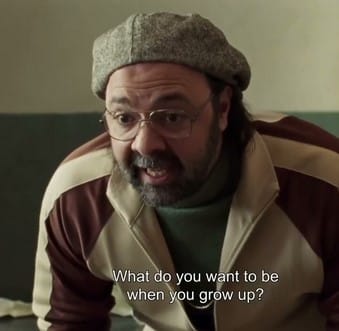Watercooler Pick

Pompeii
- Movie
- Where to Find It: Netflix, Prime Video, Apple TV, Vudu
- Rating: PG-13
- Release Date: March 13, 2014
- Runtime: 1 hour 45 minutes
Recommended by:
Share on social media
Find More Watercooler Picks
Set in 79 A.D., Pompeii follows the epic story of a slave turned-gladiator named Milo (Kit Harrington) who wages an uphill battle against social structure and Mother Nature in search of true love and freedom. As the world around him disintegrates into fiery chaos, he must save the woman of his dreams Cassia (Emily Browning) from a corrupt senator, outrun a torrent of molten lava from Mount Vesuvius, and make a daring escape from Pompeii before it’s too late.
Emmy nominee Kit Harrington of Game of Thrones fame plays the stoic yet tenacious gladiator Milo while Critics’ Choice Awards nominee Emily Browning (A Series of Unfortunate Events) portrays the alluring damsel in distress Cassia. Paul W.S. Anderson (Resident Evil, The Three Musketeers) directs and supervises production.
As Gladiator II whips up new interest in the fall of the Roman Empire, albeit requiring a big night out at theaters, it’s worth revisiting this much more romantic ode to gladiators that became a sudden hit on Netflix last fall — nine years after it crashed and burned at the box office. The romantic historical disaster film rose like a phoenix from the ashes  and became an “overnight” Netflix hit! Initially, the movie’s resurgence (it peaked at No. 5 on the Netflix Top 10 in the United States in October of 2023) stunned everyone. But as soon as the dust settled, journalists were able to put two and two together: the social media juggernaut TikTok, not divine intervention, inadvertently brought Pompeii back from the dead.
and became an “overnight” Netflix hit! Initially, the movie’s resurgence (it peaked at No. 5 on the Netflix Top 10 in the United States in October of 2023) stunned everyone. But as soon as the dust settled, journalists were able to put two and two together: the social media juggernaut TikTok, not divine intervention, inadvertently brought Pompeii back from the dead.
Well according to The Washington Post, it started rather innocuously when an Instagram user/ Roman re-enactor named “Gaius Flavius” told his followers that women don’t realize how often men think about the Roman Empire. He suggested that they should ask their ‘husband/boyfriend/father/brother,’ because the answers will definitely surprise them. The trend inexplicably spread like wildfire on TikTok and before anyone can ask a follow-up question, the hashtag #romanempire has already amassed a mind-boggling 1.3 billion views on the app!
Was it a preamble to the campaign for Gladiator II? Who knows, but the social media meme has given Pompeii a new lease on life. The movie might not have been able to connect with audiences and critics during its original theatrical release, but it’s not, by any means, an unmitigated disaster (at least for me). There are actually some redeeming qualities to this ‘disaster piece’ if you look hard enough – like finding treasures in the rubble.
The Story: Pompeii tells a tale as old as time: Two star-crossed lovers fighting a rigid social structure and the forces of nature to follow the path of true love. Imagine Titanic with a Gladiator sub-plot.
 Perhaps the movie’s saving grace is its great attention to detail and historical accuracy. British director Paul W.S. Anderson hired a legion of craftsmen to recreate paintings, sculptures, and works of art down to every last detail, and reconstructed buildings with the exact dimensions of those excavated in the ancient city. He painstakingly studied Pompeii and flew over Mount Vesuvius and other active volcanoes extensively for six years for digital imaging and employed Lidar, a laser remote-sensing technique, to recreate the city’s topography on the set. He even hired a Roman historian and vulcanologist as advisers to portray Pompeii’s catastrophic demise as accurately as possible. From a historical and technical standpoint, the movie left no stone unturned.
Perhaps the movie’s saving grace is its great attention to detail and historical accuracy. British director Paul W.S. Anderson hired a legion of craftsmen to recreate paintings, sculptures, and works of art down to every last detail, and reconstructed buildings with the exact dimensions of those excavated in the ancient city. He painstakingly studied Pompeii and flew over Mount Vesuvius and other active volcanoes extensively for six years for digital imaging and employed Lidar, a laser remote-sensing technique, to recreate the city’s topography on the set. He even hired a Roman historian and vulcanologist as advisers to portray Pompeii’s catastrophic demise as accurately as possible. From a historical and technical standpoint, the movie left no stone unturned.
The acting was not as bad as what the critics suggested either. Emily Browning, who plays the doe-eyed noblewoman Cassia, and Kit Harrington as the soft-spoken yoked gladiator Milo, have good chemistry. They’re actually delightful to watch in some scenes, and I think the only thing that’s holding them back is that their story wasn’t properly explored. The rest of the cast (in the grand scheme of things) served their purpose, especially Adewale Akinnuove-Agbaje, who plays Atticus (Milo’s gladiator rival) with conviction.
 Portraying an epic historical event is a daunting task, and I think the movie’s own undoing is that it tried to do too much. It had huge aspirations, seeing as it’s a disaster-romance hybrid rendered in glorious 3D, but since it failed to tell a coherent story with depth and immediacy, it was quickly reduced to ashes at the box office.
Portraying an epic historical event is a daunting task, and I think the movie’s own undoing is that it tried to do too much. It had huge aspirations, seeing as it’s a disaster-romance hybrid rendered in glorious 3D, but since it failed to tell a coherent story with depth and immediacy, it was quickly reduced to ashes at the box office.
That was 9 years ago, however, and the world was much different back then. Maybe it requires a second viewing–with fresh eyes, perspectives, and social media sensitivities–to be appreciated. Which begs the question: Will the latest buzz surrounding Pompeii be short-lived or will it create a cult following? If there’s one thing that this latest TikTok trend has demonstrated, it is that you can never count out the Roman Empire — or Roman Empire-themed movies.
History has shown that just like how the calcified layers of hot ash ironically protected the ancient city of Pompeii for thousands of years, the catastrophic failures at the box office might have also preserved the film fortuitously for posterity.
A visually pleasing, mostly accurate, and entertainingly superficial adaptation of one of the most catastrophic events in history. Pompeii is the type of disaster film that you don’t need to take seriously to enjoy. The story might not have that much fluidity and presents only surface-level characters, but it turns into a fiery spectacle that is hard to look away from.
History buffs, family and friends (especially men but also women who are trying to understand this newfound preoccupation). Fans of action-adventure, love stories, and second chances could also embrace it.
In an interview with the Observer, Anderson disclosed that even though Pompeii is considered entertainment rather than a documentary, accuracy became an obsession with him. He went to extreme lengths to recreate movie props as accurately as possible such as stocking a fish stall only with species that the Pompeiians are known to consume, reproducing costumes from paintings, and baking loaves similar to those preserved in volcanic ash among other things. In an effort to make the action sequence more realistic and limit CGI, actors endured extreme physical demands. “A lot of what you see is real. The actors are in there with the flames and ash. Unpleasant for them, but very realistic,” he revealed.
Anderson also told the Observer that he has been obsessed with the Roman Empire since childhood. “Growing up in the north of England, close to Hadrian’s Wall, the Romans were a big part of my life as a kid,” he fondly recounted.
- Moods: take me back, transfix me, up my adrenaline
- Interests: epic, history, romance, starting over

Churchill P. Guevarra








